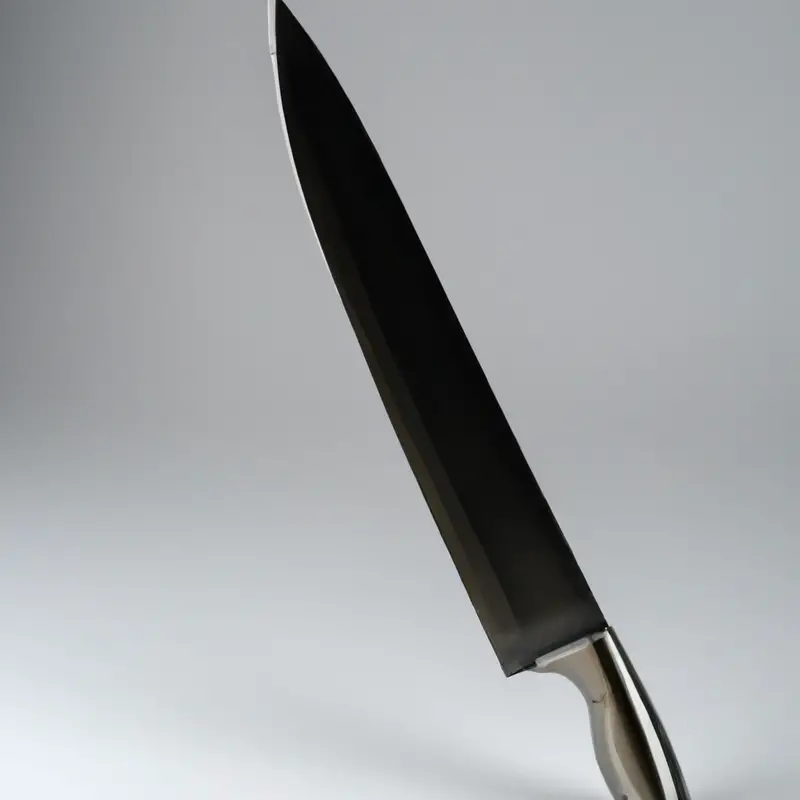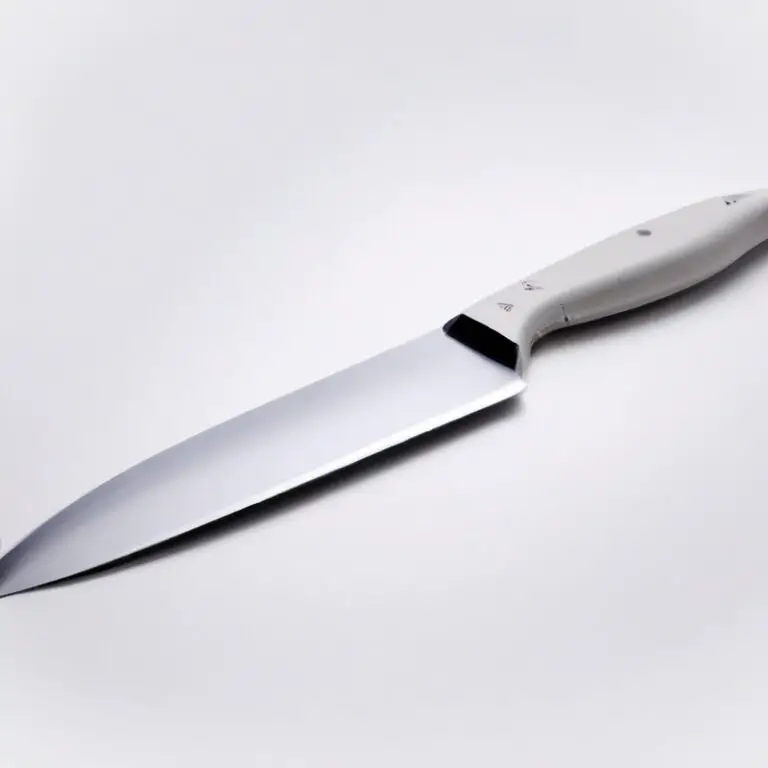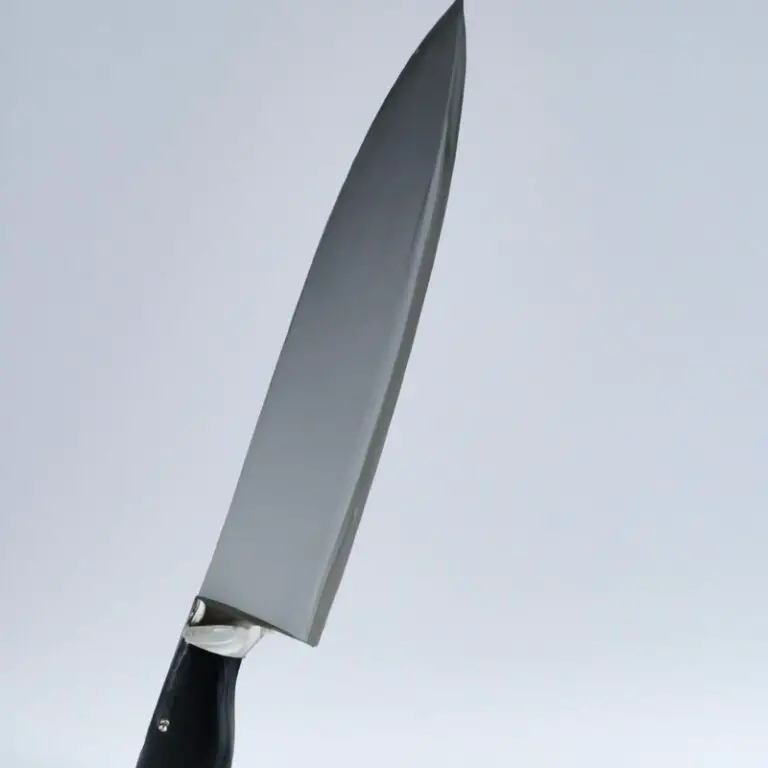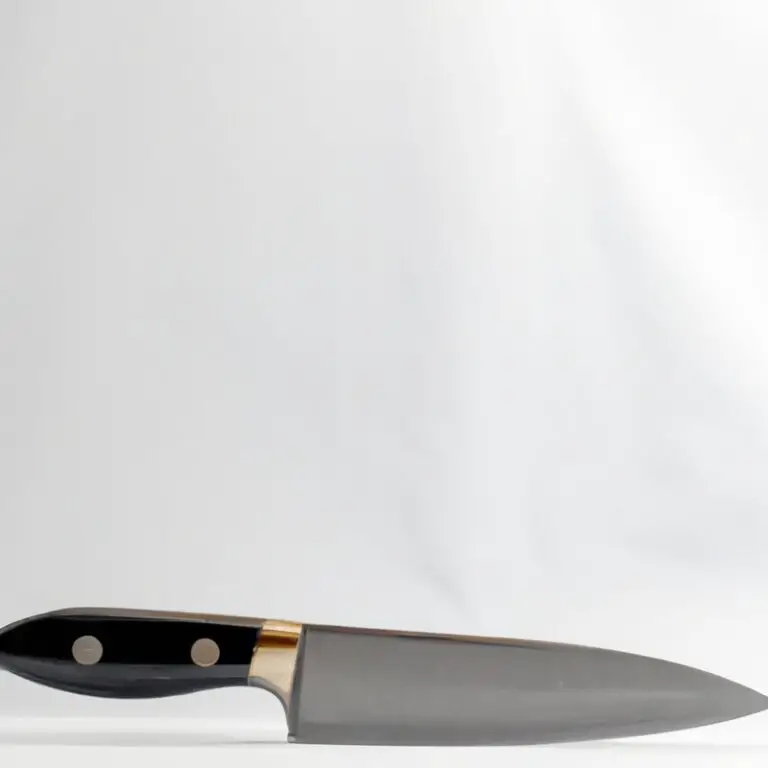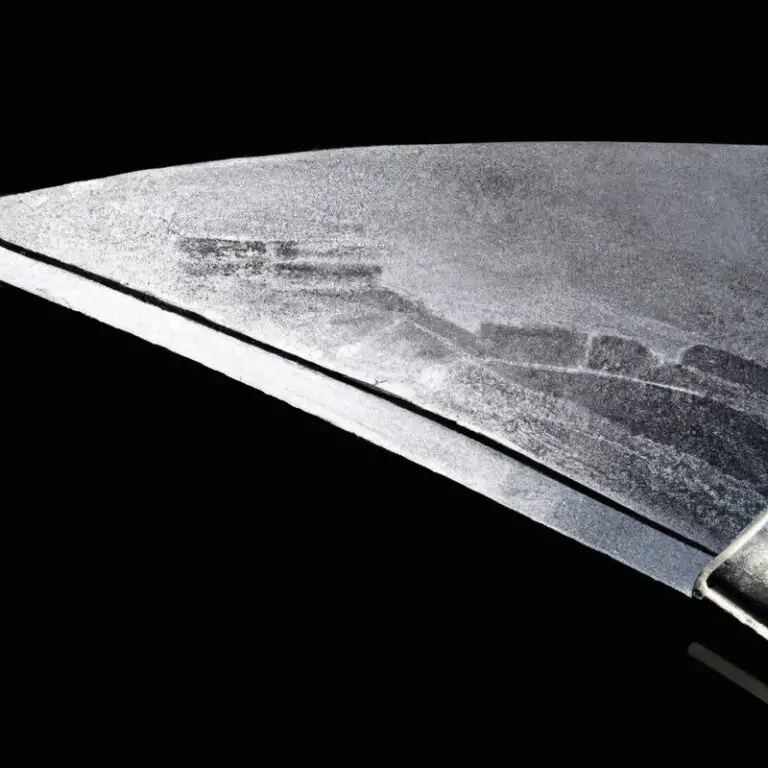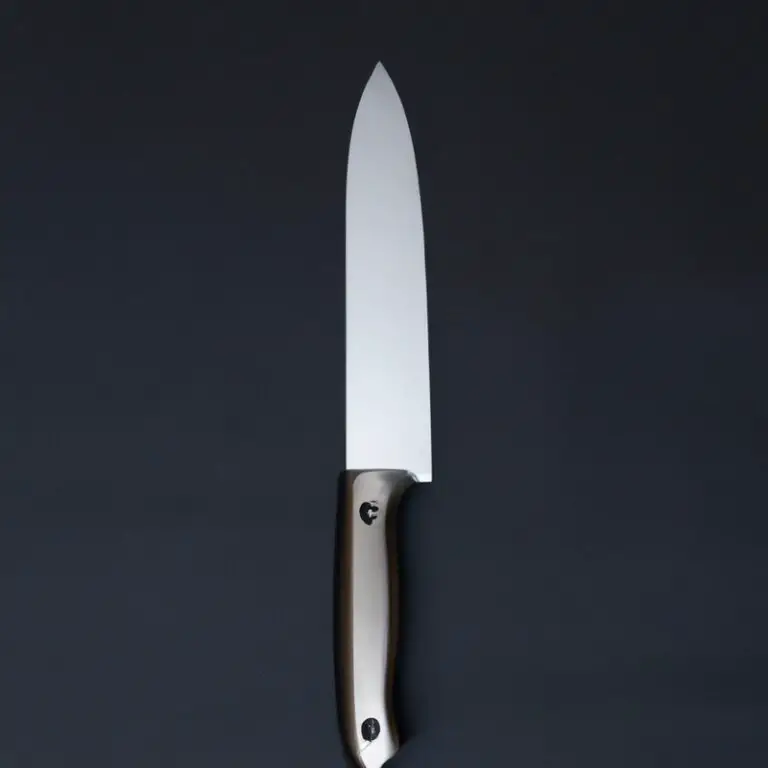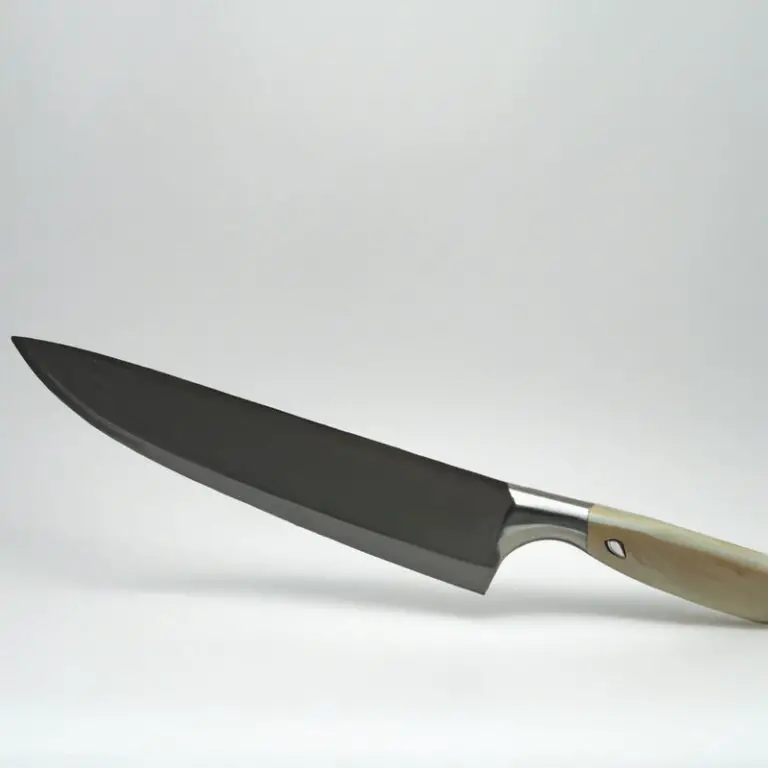How To Prevent The Handle Of a Chef Knife From Becoming Slippery? – Stay Safe In The Kitchen!
Key Takeaways:
- Keep your hands dry and clean to prevent slipping while using a chef knife
- Use an antiskid surface or textured handle to improve grip on your chef knife
- Make sure your chef knife is well-balanced and fits comfortably in your hand
- Regularly maintain and sharpen your chef knife to reduce the chances of slipping and ensure optimal performance.
As a chef, the last thing you want is for your knife handle to become slippery while preparing a meal. A slippery handle can cause poor control, slips, and ultimately result in an accident.
So, what can you do to prevent this from happening?
In this article, I’ll share with you some expert tips on proper maintenance techniques, the factors that contribute to a slippery handle, the importance of grip types and handle materials, and how to choose the right one for you. We’ll also explore the role of finger positioning, balance, weight distribution, ergonomics, and even training exercises to improve your grip and prevent slips.
So, let’s get started and ensure your kitchen safety!
| Solution | Description |
|---|---|
| Handle Material | Choose a handle material that provides good grip such as rubber, polymer, or textured wood. |
| Handle Shape | Consider the shape of the handle. A contoured handle can provide better grip and comfort. |
| Finger Guard | Look for a knife with a finger guard. This helps prevent your fingers from slipping onto the blade and getting cut. |
| Palm Swell | Some knives have a palm swell which can provide added grip and prevent slipping. |
| Maintenance | Maintain the handle regularly by keeping it clean and dry. Oils and moisture can cause the handle to become slippery. |
Proper maintenance techniques to keep a chef knife handle from becoming slippery
Proper maintenance is crucial in keeping a chef knife’s handle from becoming slippery. Here are some effective techniques:
- Clean the handle regularly with soap and water.
- Dry the handle thoroughly after each use to prevent moisture buildup.
- Apply a grip-enhancing material, such as skateboard grip tape or rubber grips, to the handle.
- Use oil or wax to condition the handle and improve its grip.
- Avoid exposing the handle to extreme temperatures or chemical cleaners.
Regular maintenance and care for your knife handle will not only improve its grip but also prolong its lifespan. Remember to always prioritize safety when handling sharp knives.
Factors that contribute to a slippery knife handle and how to avoid them
Factors that Contribute to a Slippery Knife Handle and How to Avoid Them.
- Moisture: One of the most common reasons for a slippery handle is moisture. When the handle becomes wet, it loses grip, making it challenging to hold. To avoid this, dry the handle frequently with a towel or cloth to keep it dry.
- Grease: Another reason for a slippery handle is grease. When the handle comes into contact with oil or grease, it becomes slippery, putting you at risk of accidents. To avoid this, clean your knives thoroughly after using them.
- Shape and size of the handle: Some knife handles are too smooth and can become slippery, making holding the knife uncomfortable. Ensure you choose a knife with the right handle size and shape that feels comfortable in your hand.
- Material: Some materials are more slippery than others. For example, handles made of plastic or hardwood tend to be slippery while those made of rubber or silicone provide a better grip. Choose a knife with a grip that works for you.
- Poor grip strength: If you have weak grip strength, you will find it challenging to hold onto your knife correctly. To improve grip strength, try exercises such as finger and hand exercises with a grip strengthener to make holding your knife easier.
To avoid slips and accidents, ensure you keep your knife handle dry, clean, and choose the right size, shape, and material. Additionally, make sure to take care of your grip strength by practicing grip exercises regularly.
Understanding the grip types and how to choose the one that suits your needs
Understanding the grip types and how to choose the one that suits your needs: When it comes to the grip of a knife, there are mainly three types: full tang, partial tang, and handle tang. A full tang knife means the blade extends through the entire handle, while a partial tang knife only runs partially into the handle.
A handle tang is a knife with no tang; instead, it has a solid handle.
The grip type you choose should depend on personal preference and the purpose of the knife. A full tang knife is the most durable and has excellent balance, making it ideal for heavy-duty tasks such as chopping tough vegetables and meats.
On the other hand, a partial tang knife is less expensive and lighter, which makes it ideal for delicate cutting tasks such as filleting fish and trimming meat.
Handle tang knives, also known as “rat tail” knives, are the cheapest and least sturdy of the three types. They are more likely to slip from your hands, making it unsuitable for most kitchen tasks.
In summary, when choosing the right knife grip, consider the knife’s purpose, your personal preference, and the durability of the knife.
A full tang knife is best for durability, while a partial tang knife is suitable for lightweight tasks. Avoid handle tang knives as they are more likely to slip and cause accidents.
In-depth analysis of the handle materials that contribute to the knife’s slipperiness
The handle material plays a crucial role in determining the grip quality and slipperiness of a chef knife. Materials like stainless steel or hard plastics have a smooth texture making it difficult to hold the knife, and they tend to become slippery when wet.
On the other hand, materials like wood, rubber, or textured polymers provide better grip and control, even when wet.
Wood materials like rosewood and ebony are commonly used for high-end knives because they offer excellent grip and are comfortable to hold. However, they require more maintenance than other materials to prevent moisture absorption or cracking.
Rubber and textured polymers, on the other hand, are less expensive and easy to maintain.
They offer a stable grip, which makes them an excellent choice for novice chefs or people struggling to prevent their knives from slipping. Overall, when choosing a knife handle, it’s important to consider the material’s texture, durability, maintenance requirements, and ergonomic design.
This way, you can choose a handle that provides maximum grip, control, and safety.
How to improve your grip strength and keep the knife handle from slipping
Improving your grip strength can help prevent the handle of a chef knife from becoming slippery. Here are a few techniques to consider:
- Squeeze a stress ball or grip strengthener for a few minutes a day to build up your hand muscles.
- Practice holding the knife with a firm grip, but don’t overdo it as gripping too tightly can fatigue your hands.
- Consider using a grip-enhancing product such as a non-slip tape or spray to improve the texture of the handle.
- Experiment with different grip techniques to find the one that works best for you. Some popular ones include the pinch grip, hammer grip, and the handle grip.
- Keep your hands clean and dry while using a knife to avoid slips. Wipe off any excess moisture on the handle before use.
By incorporating these methods into your routine, you can improve your grip strength and keep the handle from slipping, enabling you to work with greater precision and control.
The role of finger positioning in preventing a slippery handle and how to achieve it
Finger positioning is crucial in preventing a slippery knife handle. Holding the knife handle with all four fingers wrapped around the handle and the thumb resting on the opposite side helps maintain a firm grip.
Additionally, placing the index finger on the blade’s spine helps stabilize the knife and improve control.
To further increase grip strength, use your other hand to apply pressure to the knife’s spine while cutting. Practice holding the knife correctly to improve your technique and prevent slips.
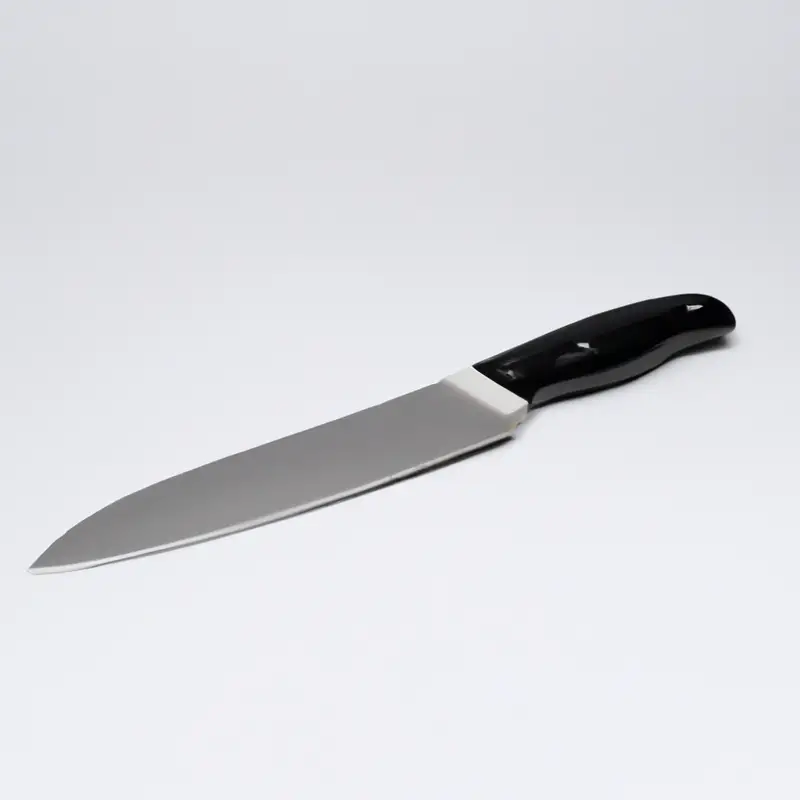
The importance of knife balance and weight distribution in keeping the handle from becoming slippery
The balance and weight distribution of a knife play a critical role in preventing the handle from becoming slippery. Knives with a well-balanced weight distribution allow for a natural grip, reducing the chances of slipping.
The balance also ensures that the weight of the blade is evenly distributed, making it more comfortable to hold and reducing the likelihood of the handle slipping out of your hand.
A knife with a top-heavy blade is particularly problematic as it tends to fall forward causing instability and making it tougher to hold. Therefore, it’s essential to choose a knife with a comfortable weight distribution and a well-balanced weight.
Improving knife handle ergonomics to prevent slips and improve your cutting control
Improving knife handle ergonomics can significantly reduce the risk of slips and improve your cutting control. Consider investing in knives with textured handles, such as those with a rugged or dimpled texture, which offer superior grip and prevent the handle from slipping.
Additionally, choose knives with a raised bolster, which provides additional support and enables a better grip on the knife.
Another approach is to embrace knife handle shapes that fit the contours of your hand, such as those that have an ergonomic design. Lastly, use a pinch grip when using a knife, which involves holding the blade’s base with the thumb and forefinger, thus promoting stability and enhancing your control over the knife.
By following these tips, you can enhance your knife handle ergonomics, which will improve your safety and cutting accuracy.
The value of replacing worn-out knife handles to minimize the risk of slips and accidents
Replacing worn-out knife handles is essential in preventing slips and accidents in the kitchen. Over time, knife handles can become worn-out, lose their grip, and become weak, making them prone to breaking or slipping.
This can lead to injuries and accidents in the kitchen, which can be dangerous for both the chef and those around them.
By replacing worn-out knife handles, you can ensure that your knife is safe to use, providing a secure and comfortable grip. A slip can lead to an injury, an injury can lead to a loss of work, and a loss of work can lead to a loss of income.
Don’t let a worn-out knife handle risk your safety in the kitchen.
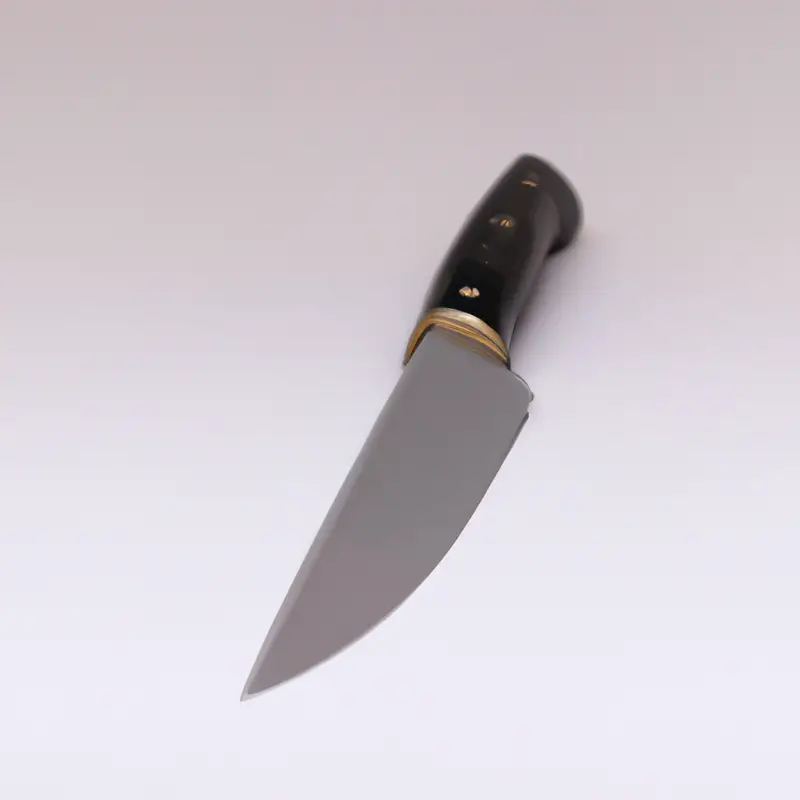
Training exercises and techniques that can help you improve your grip and prevent slips
Training exercises and techniques can significantly improve your grip and prevent slips when using a chef knife. Here are some useful methods:
- Grip strengthening exercises: Grip exercises such as squeezing a hand gripper, using a hand exerciser, or using a grip-enhancing tool like a tennis ball can help you improve your grip strength.
- Proper finger positioning: Ensure to keep your fingers in a proper position while holding the knife. Your thumb should rest on the back of the blade while your index, middle, and ring fingers should grip the handle.
- Hold the blade at a correct angle: Hold the blade at the right angle to get a better grip on the handle. Also, consider holding the knife near the blade to get a more comfortable grip.
- Keep the handle dry: Ensure you keep the handle dry and free of any oil or water to maintain a proper grip during use.
- Use non-slip materials: Consider using a grip material like rubber or silicone to wrap the handle for a more secure and comfortable grip.
Using these training exercises and techniques, you can improve your knife handling skills and keep your kitchen safe by preventing slips and accidents.
Final Verdict
Keeping a firm grip on your chef knife is crucial for your safety and precision in the kitchen. Slippery handles can be avoided by applying proper maintenance techniques, understanding grip types, and selecting the right handle materials.
Additionally, grip strength, finger positioning, knife balance, and ergonomics play a significant role in preventing slips and accidents.
Lastly, replacing worn-out knife handles and implementing training exercises can further reduce the risk of slipping. By implementing these techniques and staying vigilant, you can improve your cutting skills and protect yourself from harm.
Trust in these expert tips and make them a part of your culinary routine.

